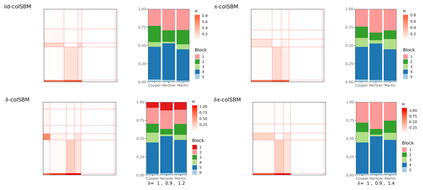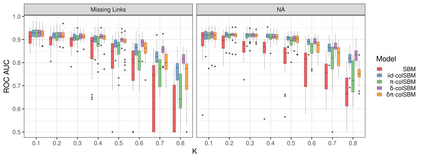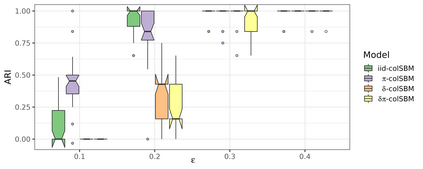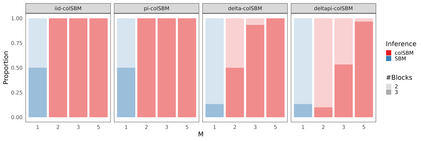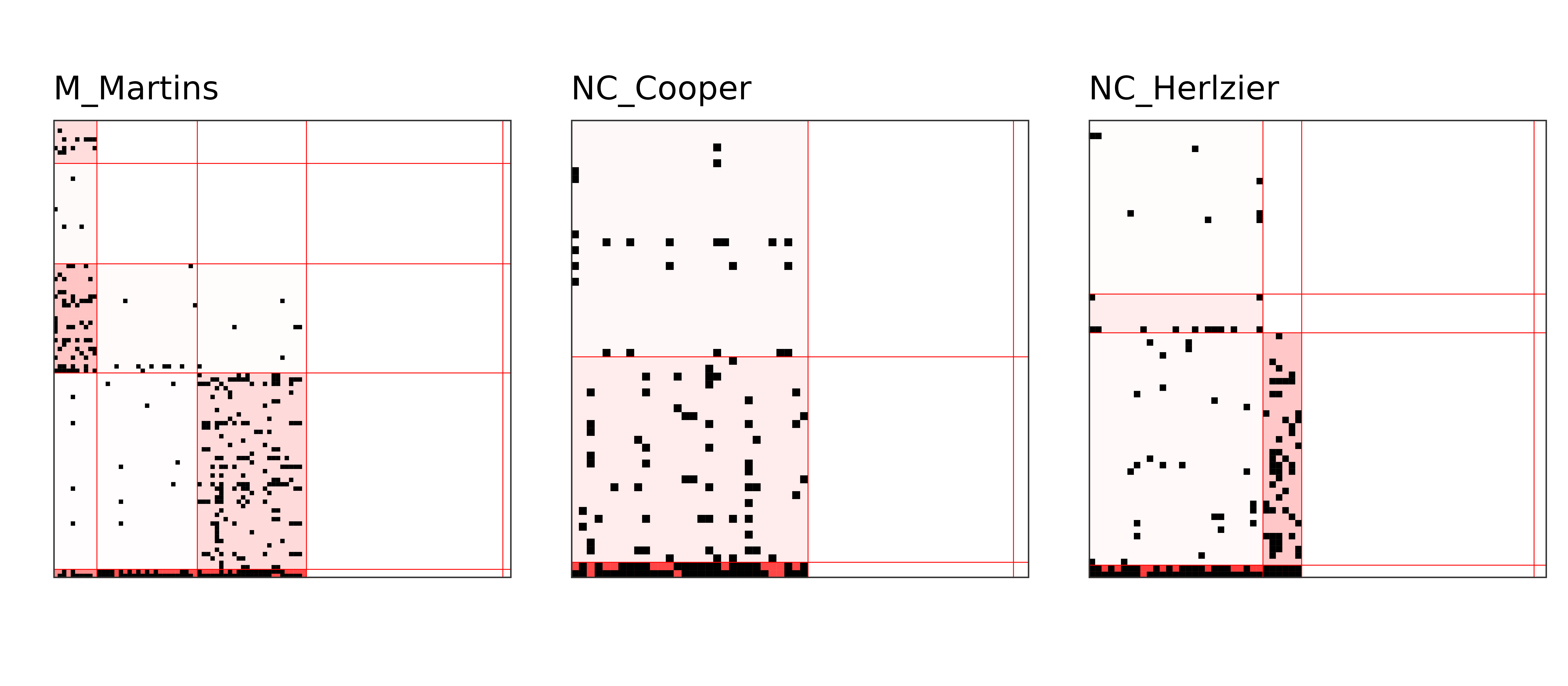Let a collection of networks represent interactions within several (social or ecological) systems. We pursue two objectives: identifying similarities in the topological structures that are held in common between the networks and clustering the collection into sub-collections of structurally homogeneous networks. We tackle these two questions with a probabilistic model based approach. We propose an extension of the Stochastic Block Model (SBM) adapted to the joint modeling of a collection of networks. The networks in the collection are assumed to be independent realizations of SBMs. The common connectivity structure is imposed through the equality of some parameters. The model parameters are estimated with a variational Expectation-Maximization (EM) algorithm. We derive an ad-hoc penalized likelihood criterion to select the number of blocks and to assess the adequacy of the consensus found between the structures of the different networks. This same criterion can also be used to cluster networks on the basis of their connectivity structure. It thus provides a partition of the collection into subsets of structurally homogeneous networks. The relevance of our proposition is assessed on two collections of ecological networks. First, an application to three stream food webs reveals the homogeneity of their structures and the correspondence between groups of species in different ecosystems playing equivalent ecological roles. Moreover, the joint analysis allows a finer analysis of the structure of smaller networks. Second, we cluster 67 food webs according to their connectivity structures and demonstrate that five mesoscale structures are sufficient to describe this collection.
翻译:让一个网络集合代表多个系统内的相互作用。我们追求两个目标:识别网络之间在拓扑结构上所共有的相似性,以及将网络集合聚类成结构相似的子集合。我们采用基于概率模型的方法来解决这两个问题。我们提出了一种适用于联合建模一组网络的扩展随机块模型(SBM)。集合中的网络被假定为SBM的独立实现。共同的连通性结构是通过某些参数的相等性实现的。模型参数采用变分期望最大化(EM)算法进行估计。我们导出了一个专门的惩罚似然标准,用于选择块的数量并评估不同网络之间共识的适宜性。此标准还可以用于基于它们的连通性结构对网络进行聚类。因此,它提供了一个将集合分成结构相似的网络子集合的划分。我们在两个生态网络集合上评估了我们建议的相关性。首先,对三个流食物网的应用揭示了它们结构的同质性以及在不同生态系统中扮演等效生态角色的物种组之间的对应关系。此外,联合分析允许对较小网络的结构进行更精细的分析。其次,我们根据它们的连通性结构对67个食物网进行聚类,并证明5个介观尺度的结构足以描述这个集合。


